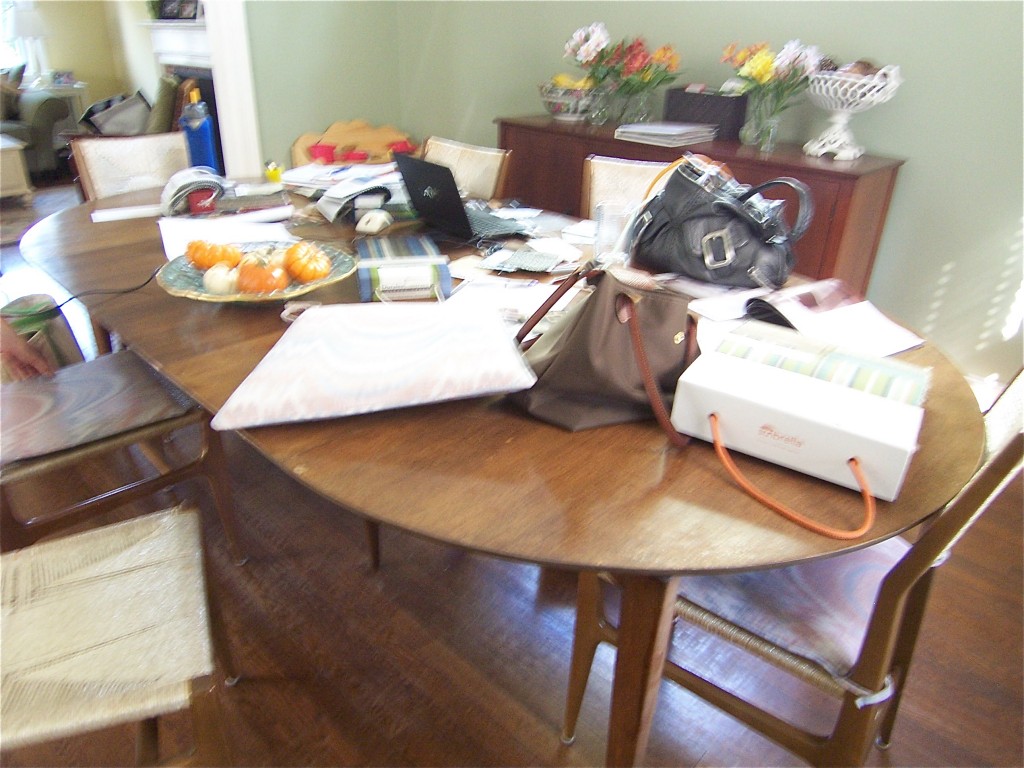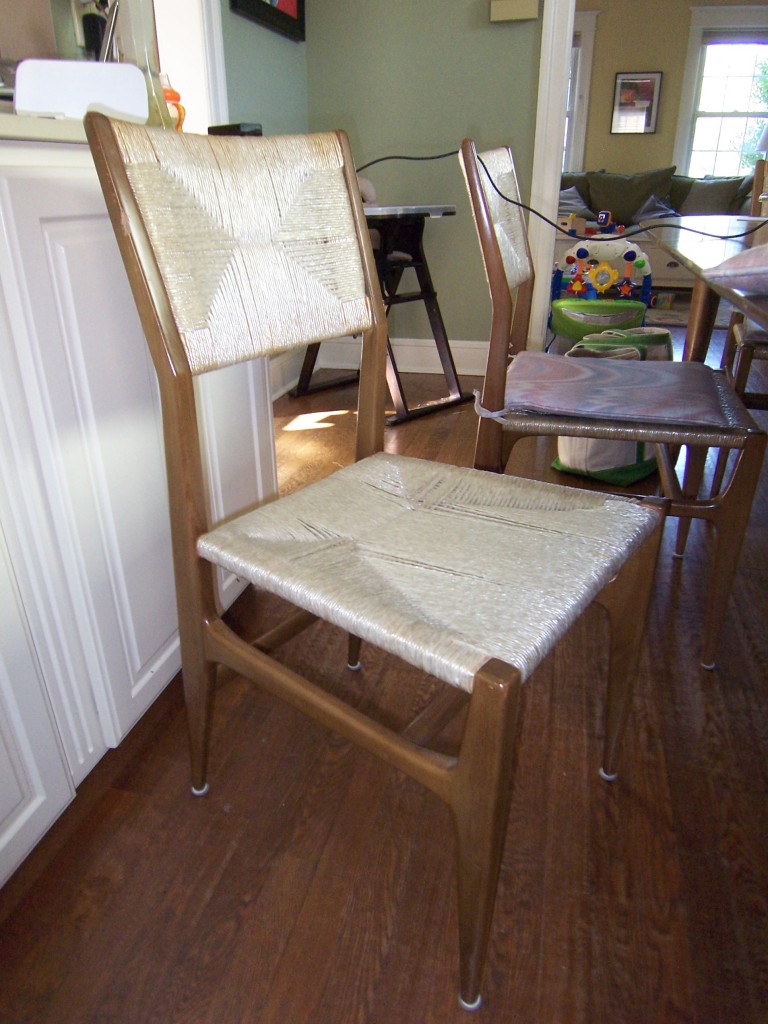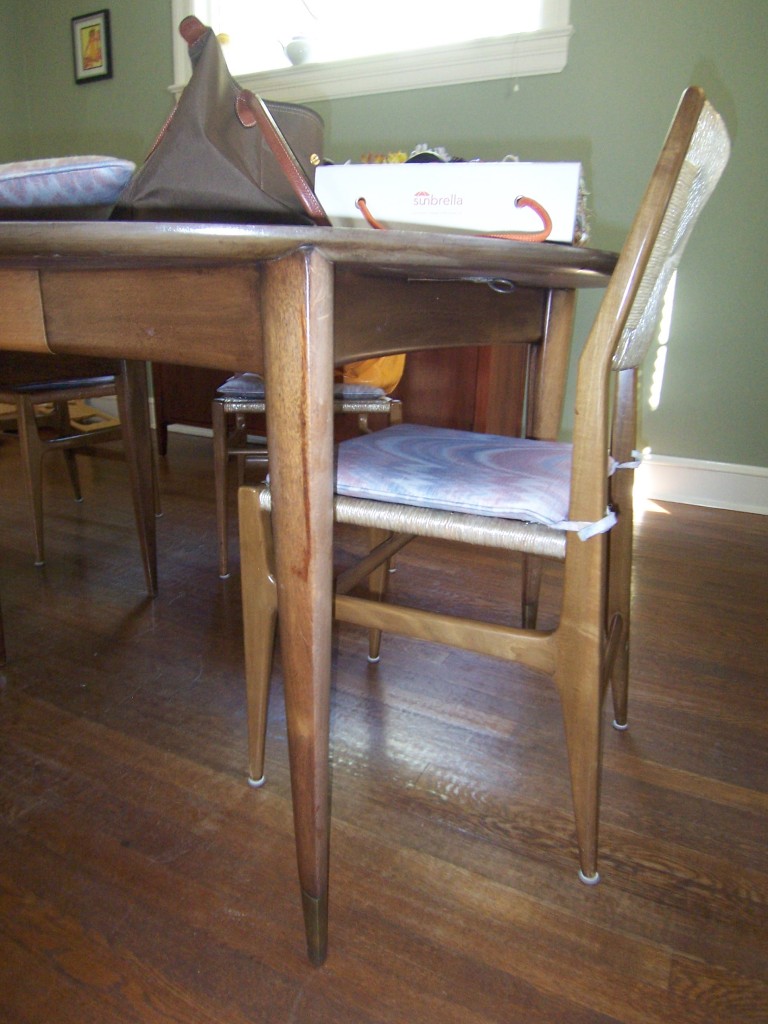During a recent bossy basic, my lovely client showed me her dining room table and chairs. One of the reasons she had called me, in fact was to get suggestions on replacing her dining room table.
The table was fine, she said, but the chairs? A little…strange.

Au contraire, mon frere! (Ma soeur, actually, but it doesn’t sound as good when you exclaim it.) The table was interesting, if it could be refinished. Problem was that we couldn’t tell if some of the leaves – there were about a thousand – were laminate or actual wood.
But the chairs! SO COOL!

The shape of the legs is quintessentially mid-century, and so that’s an interesting feature right off the bat.
But look at the woven seat and back! Those are NOT your usual rush chairs Gentle Readers! The kind made with actual rushes (you know, that grow in marshes…embarrassingly, that was a recent realization on my end) or a jute twine.
No, these are made with some kind of PLASTIC twine – it looks like you took clear packing tape and twisted it into cords.

The sparkle doesn’t come through in the pictures, but there’s a shimmer to the material, and depth.
I’ve never seen anything like them. I believe the client mentioned that her grandfather had owned a furniture store? And these might be Italian? I’ll have to confirm that with her. Whatever the backstory, I think they’re fantastic.

Since the client wasn’t happy with the overall look, though, here’s what I suggested:
- Paint the wood parts of the chairs high-gloss black. Lest this be interpreted as some designer-y recommendation that would be impossible to implement, I hasten to add that the client already has a wonderful furniture restorer/painter.
- Paint the table legs black.
- Refinish the table top and leaves if possible (i.e., if all the leaves are actual wood) and leave those wood-colored.
- OR paint the whole darn table black. If the leaves ARE laminate and therefore can’t be repainted, just use a tablecloth when they’re in. The leaves shouldn’t be left in anyway: the table is quite wide already, and with the leaves, it just makes the diminuitive chairs look out of scale.
Why all the painting? The wood was tired and needed some kind of attention. We couldn’t tell what kind of wood it was…almost teak? But not quite. And there’s a lot of wood in the dining room; the client has a small daughter, and the floor was going to remain bare or be covered with an indoor-outdoor rug.
What would YOU have done, Gentle Readers?
Annie Elliott – aka bossy color – is an interior decorator and design blogger in Washington, D.C. Look for her in the November 2010 issue of Real Simple.